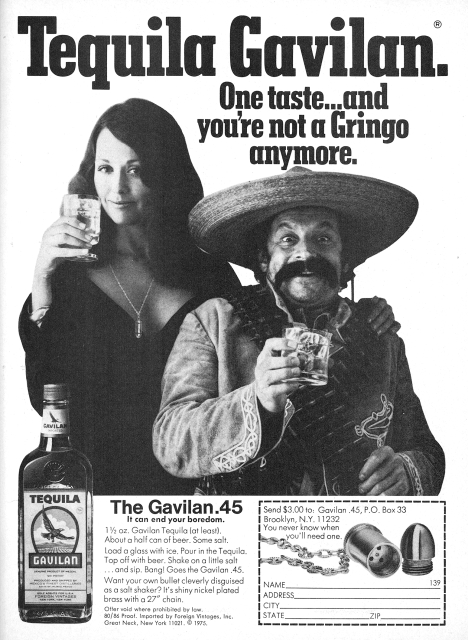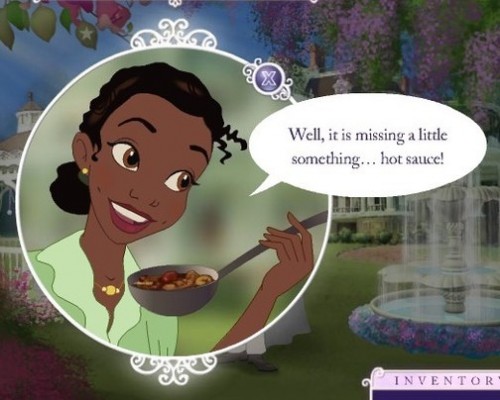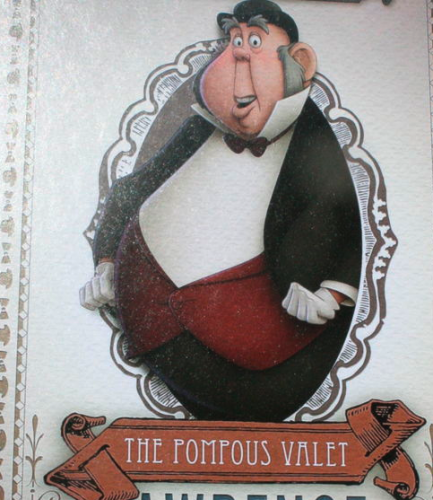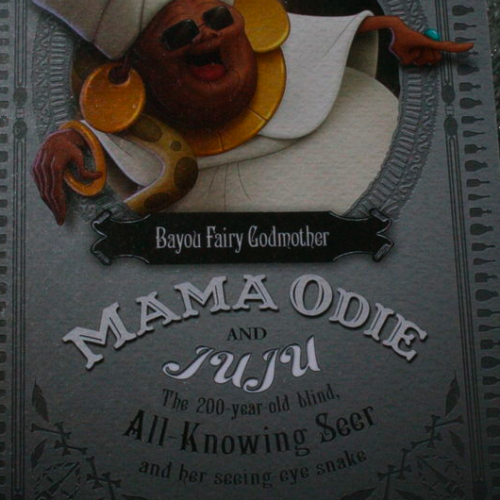—————————
Lisa Wade is a professor of sociology at Occidental College. You can follow her on Twitter and Facebook.
—————————
Lisa Wade is a professor of sociology at Occidental College. You can follow her on Twitter and Facebook.
Kate McL. sent us a link to this comic commenting on Hollywood casting and race.
—————————
Lisa Wade is a professor of sociology at Occidental College. You can follow her on Twitter and Facebook.
Lisa Wade, PhD is an Associate Professor at Tulane University. She is the author of American Hookup, a book about college sexual culture; a textbook about gender; and a forthcoming introductory text: Terrible Magnificent Sociology. You can follow her on Twitter and Instagram.
Miz Belle sent us a set of photos from the September issue (#106) of Numéro, a fashion magazine. The fashion spread, titled “Best Friends” (I found at least one post online saying the two models are, in fact, good friends) features a White woman in at least enough clothing to cover her lady bits posed next to a Black woman whose breasts are on display as she is either entirely or partially naked.
These aren’t even vaguely safe for work.
We recently posted about a baby doll pulled from Costco shelves after concerns that it was racist. Early news stories reported on a black doll called “Lil’ Monkey” and a white doll called “Pretty Panda.” As the story developed, it became clear that both dolls came in white, black, and Hispanic versions. It made for an interesting discussion: (1) Given the history of associating black people with primates, would it have been racist had the doll only came in black monkey and white panda versions? And (2) given the history of associating black people with primates, was it racist, regardless, to make a black “Lil’ Monkey” doll that potentially triggered and/or effectively ignored this history?
The CBS affiliate in Denver linked to our post and discussion in their story about the controversy…
…which was published under “weird news.”
Screenshot:
I am trying to keep my cool here.
Justification for African slavery was built on an association of black people with primates designed to deny black humanity. Institutional, social psychological, and symbolic racism is ongoing in the U.S. and profoundly inhibits the life chances of black and brown people.
And yet when people say “hey, this makes me uncomfortable,” they are ridiculed and slotted into “weird news.”
It doesn’t even matter whether the intent or effect of the doll is racist. Let me say that again: For this discussion, it doesn’t matter whether the intent or effect of the doll is racist.
Concerns about racism are trivialized when raising the question is defined as simply “weird.” Even more, it is yet another way to deny the humanity of people of color. When they and their allies raise their voices to weigh in on what representations of blackness are acceptable, they are dismissed like petty children or lunatics. It is nothing less than a stunning lack of empathy.
If you needed evidence that we are not post-racial… well, there you have it.
—————————
Lisa Wade is a professor of sociology at Occidental College. You can follow her on Twitter and Facebook.
In 2000, at the University of Wisconsin – Madison (UW), Diallo Shabazz was my student. He was a senior. At the very beginning of his Frosh year, someone snapped this picture:

From that point forward, Diallo was featured in UW promotional materials again and again. He became accustomed to seeing that smile everywhere. Because diversity has become such a popular, even trendy thing for a college to have, many students of color find themselves used as representatives of their colleges disproportionately.
But Shabazz’s story takes a fascinating turn. At the end of his senior year he paged through the next year’s application and didn’t see himself. Hmmm. Then, someone asked if he saw himself on the cover. And he looked and didn’t see it and then he did. Do you?
That’s Diallo behind the excited girl on the left. Except Diallo had never been to a UW football game. You might recognize his face, transposed, from the original picture. Indeed, someone at UW had photoshopped Diallo into the image below in order to give the impression that attendance at the game was more diverse than it was. No Diallo:
In that year 100,000 admission booklets went out with his face. More insidiously, 100,000 admission booklets went out using his face to give the illusion of diversity at the University of Wisconsin – Madison.
Diallo sued. He didn’t ask for a settlement. He said that he wanted a “budgetary apology.” He asked that, in compensation, the University put aside money for actual recruitment of minority students. He won. Ten million dollars was earmarked for diversity initiatives across the UW system. The irony in the whole thing is that UW requested photos of Shabazz shaking administrators’ hands in reconciliation (i.e., photographic proof that everything was just fine). Oh, and also, the Governor vetoed part of the earmark and many initiatives wore off with turnover.
What does this teach us?
First, notice that we have a commodification of diversity. It is considered useful for selling an institution.
Second, if real diversity isn’t possible, cosmetic diversity will do.
Third, Shabazz himself was dismissed even as his image was used over and over. Not only did they own the rights to his image and include him in many materials without the requirement that they ask or inform him, they literally took his image, cut it up, and used it to create a false picture. When Shabazz complained, they first tried to blow him off. So he wasn’t important to them, even as what he represented clearly was.
This suggests, fourth, that there was a real lack of a substantive dialog about and investment in race and diversity on the campus. Talk: difficult. Recruitment of minorities to a mostly white campus: tricky. Addressing the systematic educational underinvestment in minorities prior to arriving at UW: expensive. Retaining minorities in that environment: challenging. Photoshop: easy.
Macon D., at Stuff White People Do, featured a similar situation in which Toronto’s Fun Guide (badly) photoshopped a black man onto their cover because their “goal was to depict the diversity of Toronto and its residents” (story here) (images also sent in by fds and Michael G.):

Original photo:

All of this puts into some perspective the recent Microsoft scandal that Jon S. and Dmitriy T. M. asked us to blog about. If you were in the U.S. you would see the first image on the Microsoft webpage (with, as far as we know, real minorities) and, if you were in Poland, you would have seen the second image (with the black man replaced by a white man):

NEW! (Nov ’09):
Arturo Garcia pointed out that U.S. advertising for Couples Retreat included a black couple, but the advertising in the U.K. did not.
U.S. poster:

U.K. poster:

The willingness to play with the presence of minorities–both by photoshopping them in and out–suggests that companies are making strategic, not ethical, decisions about what kind of public face (forgive the pun) to put on. All of this avoids any real engagement with diversity itself. This is probably largely because diversity is a minefield. It’s incredibly difficult to even figure out how to define it, let alone how to build it, or how to manage it once you have it (something that my current institution struggles with). And yet, these are the things that we must do. Otherwise all of these strategic moves, both towards and away from minorities, are suspect.
NEW! In our comments, Jackie and Jasmine drew our attention to another example. This is from the University of Texas, Arlington:

See also our series on how people of color are included in advertising aimed primarily at white people, starting here.
If you’re really interested in these ideas, you might want to read MultiCultClassics, a blog specializing in how companies try to recruit minorities and present themselves as diverse institutions.
—————————
Lisa Wade is a professor of sociology at Occidental College. You can follow her on Twitter and Facebook.
Lisa Wade, PhD is an Associate Professor at Tulane University. She is the author of American Hookup, a book about college sexual culture; a textbook about gender; and a forthcoming introductory text: Terrible Magnificent Sociology. You can follow her on Twitter and Instagram.
On the heels of our Frito Bandito post, comes this (I think) 1975 ad for Tequila Gavilan. Slogan: “One taste…and you’re not a Gringo anymore.”

If I’m reading this ad correctly, both the woman and the man in this ad are supposed to be Mexican. What’s interesting, then, is the different social construction of Mexican men and women. While the male is the familiar “Frito Bandito,” sombrero-wearing fool, the female is a hot, spicy Latina. Today the Mexican fool is a risky stereotype to pull out, but the hot spicy Latina is still a very common trope.
From another angle, this reminds me a bit of the history of colonization and war. All too frequently, male ethnic others in war are considered enemies, while female ethnic others are considered the spoils of war. So the idea that the racially-othered men are disposable, while “their” women are desirable has a very long history in Western thought (see, for example, Joane Nagel’s great book, Race, Ethnicity, and Sexuality).
—————————
Lisa Wade is a professor of sociology at Occidental College. You can follow her on Twitter and Facebook.
As you may know, Disney has a movie coming out later this year called “The Princess and the Frog,” a retelling of the story of the princess who kisses a frog that then helpfully turns into a handsome prince for her to marry. The noteworthy aspect of this film, aimed at a mainstream audience, is that the female protagonist is African American. We’ve seen Disney films with non-White protagonists before–“Mulan” and “Pocahontas,” for instance–but to my knowledge there haven’t been any with a Black main character, unless I guess you count the Uncle Remus stuff, and that’s just a whole lot of ick.
While many people have eagerly awaited “The Princess and the Frog,” Disney’s long history of negative or stereotypical portrayals of non-White characters (i.e., “Fantasia“) meant many were concerned about what the final product might be, expressing concerns based on the trailer and other promotional materials that have emerged so far. Margaret Lyons at EW.com says,
Disney’s track record with racism and racist caricature makes me a little nervous when I see stuff like that toothless firefly.
According to Jezebel, “…Tiana was originally a maid named Maddy (to0 close to mammy?)…” And Leontine says,
…based on this trailer, the other things that Black people get to do are voodoo shit, playing jazz and dancing, and making jokes about their butts. Charming.
For the record, the protagonist is only African American for part of the movie; for a good chunk of it she’s a green frog. But then, doesn’t the princess turn into an ogre in at least some of the “Shrek” movies? I can’t quite recall.
The movie website has a video game. In the game (from io9),
…Tiana, is sent on a mission to retrieve the rich white girl’s tiara, so she can borrow it, but along the way she’s asked to fetch some hot sauce for the gumbo before she has permission to get to the rich girl’s bedroom.
A screenshot of the hot sauce part:

Rebekah R. pointed out a deck of promotional cards handed out at Comic-Con (also at io9). There are some interesting gender and racial elements. Here are Tiana’s parents; note that her mother is “nurturing” while her father is “inspirational”:

Dr. Facilier is a “witch doctor,” practices voodoo, and looks a bit like cartoonish images of pimps I’ve seen now and then:

I did notice that the valet (is that the same as a butler?) for the prince is White rather than Black:

The text for one of the cards says “It’s not in yo’ cards”:

Here’s Mama Odie, the godmother figure, is a “seer” with a snake:

These images and objections are interesting by themselves, but they also bring up some of the difficulties in portraying groups that have historically been stereotyped negatively and occupied a subordinate social status. For instance, the fact that Tiana was originally going to be a maid wouldn’t, on the surface, necessarily be that different from “Cinderella,” in which the (White) protagonist is basically a maid. And there’s nothing wrong with playing jazz or, for that matter, practicing voodoo (which could be seen as very similar to the magic that is so common in kids’ films).
But of course, an image of a Black woman as a maid carries different connotations than that of a White woman doing the same job. There have certainly been large numbers of White maids in the U.S. as well as other countries; in the late 1800s many female Irish immigrants to the U.S. took jobs as domestic servants. But they fairly quickly transitioned, as a group, into other types of work. African American women were stuck with jobs as maids a lot longer because of job discrimination. The “Mammy” figure, a happy-go-lucky servant pleased to take care of the White family she worked for, was applied exclusively to Black women.
Depicting Cinderella as a maid doesn’t play into pre-existing stereotypes of White women; it’s just an individual portrayal. A Black character cast as a maid, to many people, reproduces an image of Black women that goes beyond the individual–whether the creators intend to or not, such images bring with them associations to the Mammy character and real oppression of African American women in a culture that saw them primarily as servants for more privileged groups.
Disney may have intentionally tapped into those cultural images when Tiana was originally imagined as a maid for a White character (as well as including other stereotypical elements). Or the creators may have unthinkingly reproduced stereotypes because, when thinking about characters to use in a movie set in New Orleans with a Black protagonist, they drew on existing cultural imagery. In the absence of a concerted, thoughtful effort to avoid reproducing them, it’s not surprising that problematic elements show up in TV shows, movies, and so on.
Anyway, this should be an interesting situation to watch unfold when the movie is finally released.
UPDATE: Commenter John Lewis says,
This movie’s worth analyzing, but Gwen’s commentary here is not among the most insightful I’ve read on this blog. From my viewing of the trailer, without knowing much else about the film, I think she’s really reaching.
I don’t know that I’m “reaching,” exactly–we know quite a bit of other stuff about the film, such as the fact that Disney originally had Tiana cast as a maid, and that many people who want this to be a good film are very frightened about how it might turn out, which I think is fascinating in and of itself–but he’s right about it not being the best commentary ever. Meh. It’s free content, people, and this is the first week of classes. My brain works better at putting together a coherent argument some days than others. Taking the post down b/c it’s not my best, or b/c people say I’m off-base, seems sort of intellectually dishonest, like I’m trying to hide anything that gets criticized, so I guess I’ll just leave it up and people can read the critical comments.
And in my defense, it also turns out Disney has recut the trailer and some of the scenes that were in it when I first started writing up some commentary aren’t in it any more. I didn’t realize when I found a link to the trailer after the original link disappeared that it had been changed to leave out some things I found odd in the first one.
See also this post that includes a discussion of concerns that the movie “Up” wouldn’t be popular because it had an Asian lead character as well as our post on gender in Pixar films, gender roles in “Bee Movie,”
Gwen Sharp is an associate professor of sociology at Nevada State College. You can follow her on Twitter at @gwensharpnv.
Reading Resist Racism, I found a link to an article in this Sunday’s Washington Post by a journalist by the name of Amit Paley who chronicled her exploration of “tribes” in Thailand. The article is a study in class privilege, with a global twist. It begins with the sentence: “You can see almost anything in the world if you pay enough.”
She wanted to see women of the Padaung (or Kayan), who are from Burma but now live in Thailand as refugees. The Kayan women are famous for wearing brass rings around their necks, leading to the illusion of an elongated neck created by the depression of their collarbone. Paley writes:
Ever since I glimpsed the Padaung as a child in my grandfather’s National Geographics, I had wanted to see these curious women, who suffer painful disfigurement to emerge as graceful beauties.
Her description of human beings, indirectly, as curiosities, combined with the comment that you can see “anything… if you pay enough” (my emphasis) is an excellent example of the objectification of ethnic others.
Paley’s desire to see these women is almost thwarted by the majority of tourist companies in Thailand who describe her effort as exploitative and immoral. They even suggest that the women are “prisoners held captive in the villages by businessmen” making money off of tourism. This is confirmed by Wikipedia, for what it’s worth.
This doesn’t stop Paley, who keeps asking until she finds a company that will take her to one of the remote villages in which Kayan women live.
The women she meets confirm that they wear traditional garb, continue traditional practices (such as the brass rings), and are even forced to remain in the villages, in order to attract tourists. Men, largely, appear to be exempted from earning their keep in this way.
Paley says that one powerful male village member said that the women “must wear the dress because of tradition” and “spoke excitedly about its appeal to tourists and noted that half of the village’s income of $30,000 a year comes from tourism.”
A woman in brass rings told her “We do it to put on a show for the foreigners and tourists!”
Paley finishes with this lackluster reflection:
So is it unethical to visit the long-necked women? It is clearly true that money spent to visit them supports an artificial village from which they essentially cannot leave. On the other hand, many of them appeared to prefer living in virtual confinement as long as they are paid and safe. According to what they told me, their situation beats the alternative of living in a repressive country plagued by abject poverty and hunger.
I don’t feel guilty about visiting the Padaung, but my feelings might be different if I had traveled solely as a tourist rather than as a journalist. And I certainly don’t like their lot in life: Shouldn’t everyone have the freedom to live and travel wherever they want?
Well, Paley has shown that she certainly does have that freedom. And she is apparently willing to use her “journalist” identity to justify just about any advantage that her privilege affords her.
Lisa Wade, PhD is an Associate Professor at Tulane University. She is the author of American Hookup, a book about college sexual culture; a textbook about gender; and a forthcoming introductory text: Terrible Magnificent Sociology. You can follow her on Twitter and Instagram.